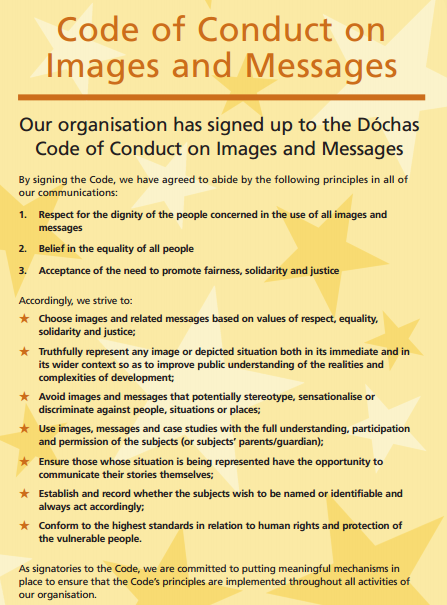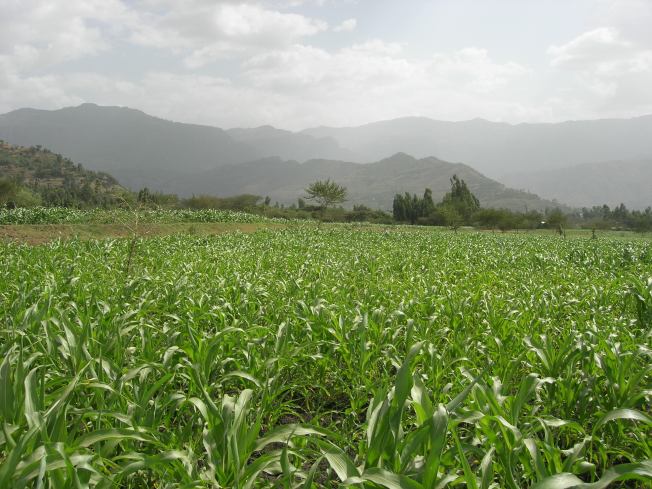This week marks the 30 year anniversary of Michael Buerk and Mohammed Amin’s coverage of the 1984 famine in Ethiopia. The report was first broadcast by the BBC on the 23rd of October, “A day that shook the world”, before spreading across the globe. The footage was shot in Korem, a small town, 100km to the North of Woldia, my hometown.
I had never seen the report until my sister shared it with me on the anniversary this week. I watched, stunned, as a scene of almost incomprehensible grief and human suffering played out on the screen before me; a man-made plague of biblical proportions, in the twentieth century. My response was visceral; my skin seemed to crawl.
***Please note, this footage was shot in 1984 and does not conform to Dóchas’ Code of Conduct on Images and Messages 2007. People may find it distressing***
https://www.youtube.com/watch?v=XYOj_6OYuJc
I’m sure most Irish people remember where they were the day they first saw that report. For me, there is no doubt that it is one the most powerful pieces of video I have ever seen. The tone, the pace, the length, the commentary and the horror. One can only imagine the effect it had on the viewing public of 1984, unused to things “going viral” or the by now already jaded “what-he-said-next-had-me-in-tears” phenomena of today’s social media. What an assault on the senses it must have been as this harrowing footage invaded cosy homesteads all around the world and then impolitely and resolutely refused to leave.
Controversy
The footage, astoundingly effective in bolstering support for the famine victims, has become part of the discourse surrounding the ethics of such reporting.
In some ways, the report may be seen as a victim of its own success as a result of the overwhelming response it provoked. Some commentators suggest it belongs to a genre of reporting by NGOs, development organizations and journalists unsettlingly labeled “poverty porn” which deliberately manipulate situations to illicit as compelling a response from the viewers as possible.
New Paradigm
There is a new paradigm emerging for reporting in such scenarios as articulated in Dóchas’ Code of Conduct on Images and Messaging 2007 of which VSO Ireland is a signatory.
Let us take, as an illustration, one aspect of the code: “Truthfully represent any image or depicted situation both in its immediate and in its wider context so as to improve public understanding of the realities and complexities of development.”
The Ethiopian famine footage does not adhere to this.
The narrative of the famine broadcast was simple: these people are, literally, starving to death because there has been no rain for three years.
Doubtless, the drought had its own effect but that explanation belies the rather more complex background to the famine, in this area at least.
A more precise narrative might have been: these people are, literally, starving to death because there has been no rain for three years…Also, Ethiopia is a country with over 80 different ethnic groups. Some of these ethnic groups are leading an insurgency against the central government. Loyalty in the country is divided on both ethnic and political/ideological lines. Food aid is being used as a weapon in this latest insurgency in Tigray. The Tigray insurgents are being supported by insurgents in a neighbouring region where the people are ethnically almost identical but wish to secede from Ethiopia entirely whereas most of the Tigray insurgents merely want a change in the leadership of the central government and to remain as a part of Ethiopia. The central government enjoys support from their Soviet allies while the rebel groups receive support from countries who are rivals of the Soviets.
…complicated!
If the narrative had been thus- less simple- would we have ignored it as a tragedy too complicated to become involved in and resign these human casualties of war to their fate?
Does the end justify the means?
The cumulative effect of this type of reporting might be that the public have grown weary of it. There is some suggestion that we have now become desensitised to and fatigued by a saturation of such images on our screens and therefore we are less likely to act unless the scene is particularly horrific. We are challenged to ask ourselves, have we now become mere consumers of actual human suffering in the same way as we hungrily consume box-sets of other dramas?
The 1984 famine footage did not just elicit sympathy in the viewers however; it was not just consumed and forgotten about, it rudely demanded our immediate attention. It was so powerful that it spurred a huge swathe of people into both charity and crucially, activism. It’s not difficult to see why it is credited with being the catalyst for the hugely popular Live Aid initiative and mobilising an outstanding response in general to the Ethiopian famine all over the world.
Oh, what it must have felt like to have been alive at this concert!!!!
Implications
Another result of the campaign may be that the imagery used then and since has become the stereotype for reporting on Africa.
This excerpt from the brilliant, satirical article by Binyavanga Wainaina sums the strategy up neatly:
“Among your characters you must always include The Starving African, who wanders the refugee camp nearly naked, and waits for the benevolence of the West. Her children have flies on their eyelids and pot bellies, and her breasts are flat and empty. She must look utterly helpless. She can have no past, no history; such diversions ruin the dramatic moment.”
For many, I wonder, is this the enduring image of Ethiopia?
Incidentally, people here do not talk much about the famine at all and I have not asked about it. Strange as it may seem, I would wager that the vast majority have never even seen this footage even though for the rest of the world it may serve to define them.
Different perspectives
30 years on from this dreadful human tragedy, Ethiopia, while not without its challenges, is a different place indeed, largely for the better. Its many success stories, not least as a result of the work of numerous NGOs and the Ethiopian people themselves.
In my next post, I will attempt to tell that story and focus on this modern day phenomenon called “The Ethiopian Renaissance” or “The African Tiger” which sees the Ethiopian economy expanding in double figures year on year.
Until then, let’s be mindful of the present; pictures of the area around Woldia in 2014. It is approaching harvest time here and the sorghum is growing tall in the fields. We have had lots of rain this summer and now the sun is shining brightly to help the crops to grow and I have gotten fat 🙂
Thanks for reading and thanks to my sisters for helping me write this post. X
For further opinion of the coverage surrounding the famine see:
In praise of Michael Buerk and Mohammed Amin http://www.nbcnews.com/news/world/how-report-ethiopias-biblical-famine-changed-world-n232126
A critical analysis of the reporting on the famine http://www.theguardian.com/global-development/poverty-matters/2014/oct/22/ethiopian-famine-report-influence-modern-coverage
A Trócaire paper from 1987 on the portrayal of the famine by the media http://www.trocaire.org/sites/trocaire/files/resources/policy/1987-ireland-media-africa.pdf


Try and get hold of a copy of Bob Geldof’s Is This It? I’ll never forget how he describes how there was so much going on in his life and music career, when the Buerk report on a TV in the background stopped him in his tracks. His description of his feelings watching is so powerful. In fact, the whole book is a mini-masterpiece. I know nothing about how available English language books are in Ethiopia, but I’m pretty sure there’ll be a few copies of it in the country! 😉
hmmm, not great availability to be honest Brendan but I’ll definitely track that book down somehow, I’d love to read it. Thanks for the heads up 🙂
Reblogged this on John Hurley and commented:
30 years since the famine in Ethiopia
Oh my God.
Interesting article on how the standards have changed and the ethics developed in reporting
One of the many questions going around in my head is would the campaign have been as successful if the new code was adhered to…or would we be moved to do anything at all? We’ll never know I guess. Very interesting discourse surrounding this on the net.
Aisling, thank you for teaching me so much and for providing information in such varied ways as to jog my memory and give me scope for thought. Thank God the people of Ethopia are in a different situation now, Noelle
What a lovely message Noelle! Thanks so much for reading 🙂 As I said, the situation people are in here is different and mostly much better but not without it’s challenges still. I wonder if I could show the footage to people here, would the people here now even be aware of how bad things were. You know we are very aware because of electrification and media, here rural electrification is only just in train and there is very low internet usage although lots of people have TVs. More food for thought! Although Siobhán mentioned to me another reason why the footage might be contraversial is that people could recognise relatives in it 😦 I am learning so much here
Very well written Aisling xx thought provoking indeed x
Aw thanks Joan, I love it that you are still reading these 🙂 xxx